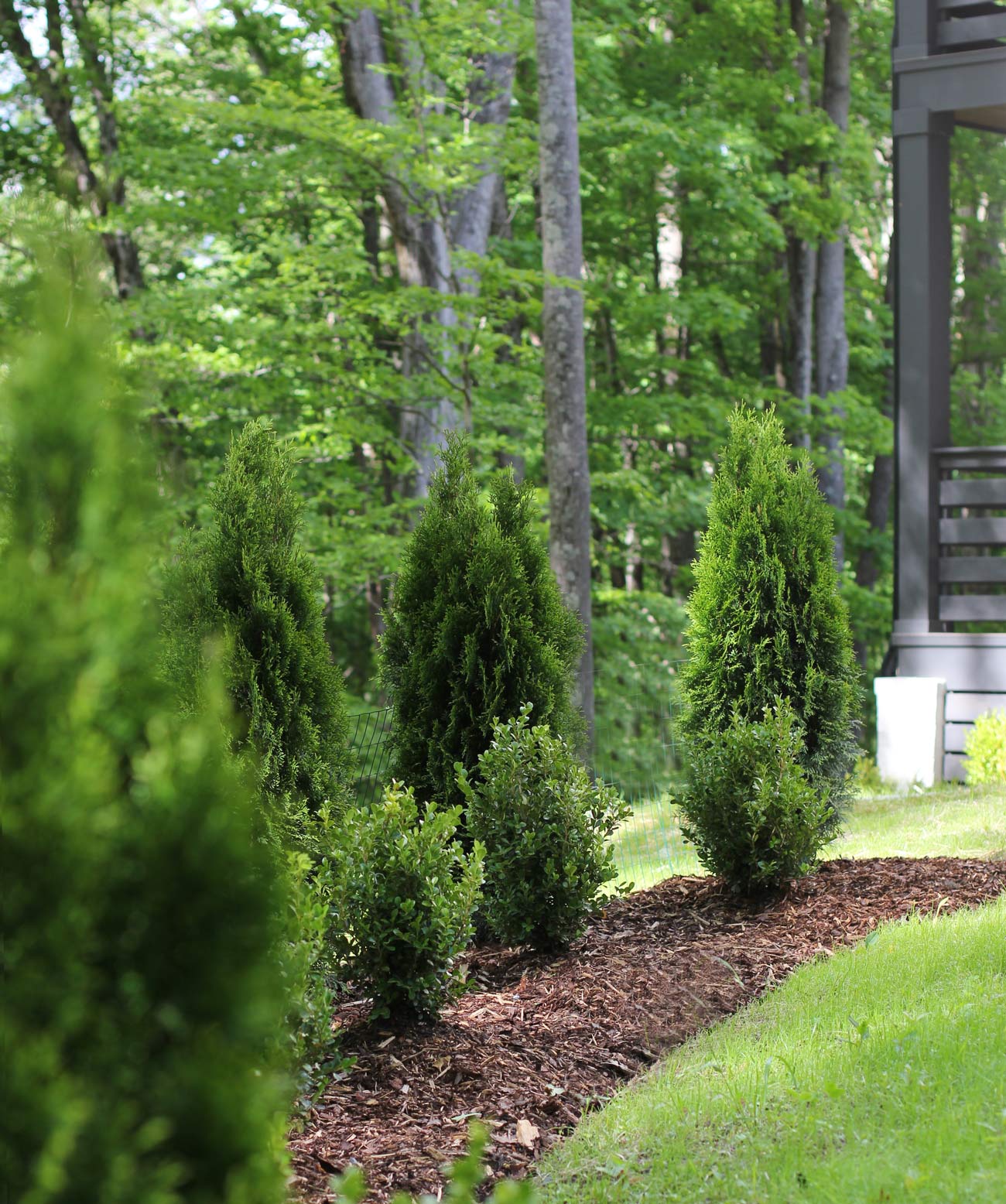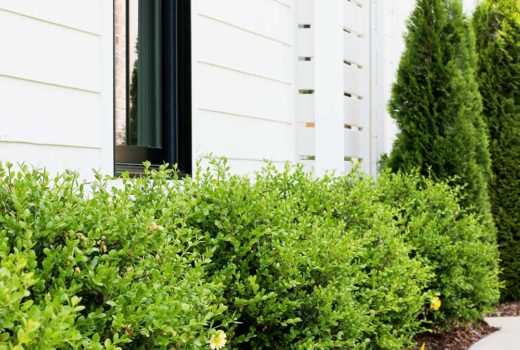
Whether you’re looking for a way to add privacy to your backyard or want to create a classic evergreen hedge, Emerald Green Arborvitae trees are an excellent choice. These beautifully cone shaped trees thrive in sun or part shade and can be used as a foundation planting, screen, or windbreak. They are beautiful but very low maintenance. Let’s take a closer look at the Emerald Green Arborvitae and all the things you need to know before investing in this evergreen tree for your landscaping.
Where to Plant
Emerald Green Arborvitaes prefer full sun but also do just fine in partial shade. So before you plant, make sure the area you’re thinking about gets enough sunlight. These trees can be planted in groups to form a hedge or planted individually to add height to your landscaping.
Be sure to stay away from any areas with standing water or low-lying ground. These trees do not like wet feet. It’s also important to note that an Emerald Green Arborvitae tree should be planted at least 3-4 feet apart, so they have room to grow. We’ll discuss this more in a bit. Make sure you choose an area where there will be enough space for them to reach their mature height of 15 feet tall.
Emerald Green Arborvitae Growth Rate
The growth rate of an Emerald Green Arborvitae can vary depending on its environment and care. However, they typically grow at a moderate rate of 1 – 2 feet per year when planted in well-draining soil with sufficient sunlight and access to water. The tree can reach heights of up to 10-15 feet tall and grow to be 3-4 feet in width. Regardless, they are considered fast-growing conifers that will provide your landscape with plenty of lush foliage throughout the year.
How Far Apart Do I Plant Emerald Green Arborvitae Trees?
The most important factor in successful planting is determining how far apart your trees should be. This largely depends on the size of the tree that you have chosen. As we learned above, these trees can reach 3-4 feet in width. So if you want to have a solid privacy hedge eventually, you should plant them 3-4 feet apart. It’s important to note that if your trees are planted too close together, they will not have enough room to grow and may become crowded as they mature.
Henry planted several Emerald Green Arborvitae Trees around the fence in our backyard. When he planted these trees three years ago I felt like the spacing seemed too far apart but as they have started to grow, I see how the 5 foot spacing is needed. These trees need space as they mature over the years.
When to Plant Arborvitae Trees
The best time to plant emerald green arborvitae trees is during the early spring months. When the soil temperatures reach 40°F or higher, this is the perfect time for planting evergreens like these. We finished and moved into our home in late February, which made planting these trees in March perfect. This was early enough in Spring to ensure that the tree had enough time to become established before cold winter temperatures arrived and put stress on its delicate root system. The earlier you get your tree planted in the spring season, the more likely it will be able to survive. It will be ready for fall and wintertime without too much extra maintenance from you as a homeowner.
How to Plant Emerald Green Arborvitae Trees
Planting a shrub or tree might seem pretty straightforward, but there are some things you need to consider. Here are some tips for planting emerald green arborvitae trees.
Step 1: Choose Your Location Carefully
When it comes to planting any kind of tree, location is key. You want to make sure you choose a spot that receives ample sunlight and has good drainage. If you have sandy soil, you can add compost or peat moss to help retain moisture. You also want to pick a spot that’s not too close to your house, or under low eaves or overhangs, as these trees can grow up to 15 feet tall as mentioned above.
Step 2: Dig the Hole
Once you’ve chosen the perfect spot for your emerald green arborvitae tree, it’s time to dig the hole! Make sure it’s twice as wide as the root ball but not any deeper than that. This will ensure proper root growth while preventing the roots from settling too deeply into the ground. If necessary, amend your soil with compost or peat moss before adding it to your tree.
Step 3: Plant & Water Your Tree
The last step is to carefully place your Emerald Green Arborvitae tree into its new home. Then fill in any gaps around its base with soil. Afterward, water thoroughly until the area is saturated. This will help settle the roots and promote healthy growth. Once it’s planted, make sure to monitor your tree for signs of stress or disease such as yellowing leaves or wilting branches. And Take action accordingly!
Care and Maintenance
The Emerald Green Arborvitae is generally a low-maintenance tree. Once it’s established, you won’t need to do much other than the occasional trimming and watering during dry spells. They don’t require a lot of pruning but if you want them to look really neat and tidy, it may be beneficial to give them a trim every couple of years or so. As far as fertilizing goes, this isn’t usually necessary as long as the soil is nutrient-rich and well-draining. That being said, adding some organic matter once a year (such as composted manure) can help keep your arborvitae healthy and happy!





1 Comment
Hi!
April 1, 2023 at 5:52 pmDo you have any recommendations for which product is best to treat spider mites on Emerald Green Arborvitaes? Lots of different products but not sure which one actually works! Thanks!